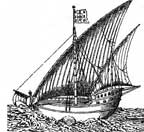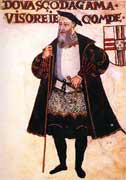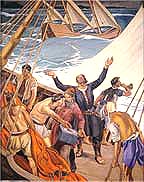The Age of Exploration Begins
 |
Prince Henry of Portugal was deeply committed to exploration. Determined to overcome the challenges hindering exploration, he founded a school of navigation in Sagres. Consequently, he earned the moniker "Prince Henry the Navigator." At his school, maps were systematically updated based on new exploration data, and a library was established to consolidate all known information on seafaring and exploration. Learn About Prince Henry the Navigator |
|
 |
Under the guidance of Henry the Navigator, Portuguese sailors diligently explored the West Coast of Africa. Though Henry passed away in 1460, Portuguese exploration persisted, pushing further south. In 1487, Bartholomeu Dias rounded the Cape of Good Hope, the southernmost tip of Africa. He aspired to continue his voyage to India, but facing the threat of mutiny from his crew, he decided to return.
|
| In 1497, Vasco da Gama successfully navigated from Portugal to India, establishing a lucrative trade route to the Far East. Da Gama's voyage represented the pinnacle of a sustained Portuguese effort to discover a sea route to India by circumnavigating Africa. Concurrently, as the Portuguese ventured south, Christopher Columbus sought a westward route to India..Vasco da Gama |  |
 >
>